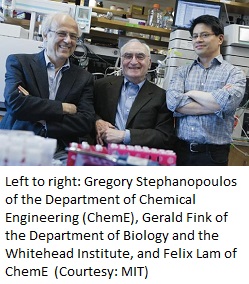 Microbes play an important role in ethanol production, and researchers in the Midwest are finding a way to get more out of the little bugs to get the most green fuel out of feedstocks, especially waste materials. This news release from the University of Wisconsin-Madison says scientists there teamed up with Michigan State University researchers to create a process for making the work environment less toxic — literally — for the organisms that do the heavy lifting in turning biomass into cellulosic ethanol.
Microbes play an important role in ethanol production, and researchers in the Midwest are finding a way to get more out of the little bugs to get the most green fuel out of feedstocks, especially waste materials. This news release from the University of Wisconsin-Madison says scientists there teamed up with Michigan State University researchers to create a process for making the work environment less toxic — literally — for the organisms that do the heavy lifting in turning biomass into cellulosic ethanol.
When industrious bacteria like Saccharomyces cerevisiae, Zymomonas mobilis and Escherichia coli go to work converting the sugar in corn stover and other plant-derived materials into ethanol, they also run into aromatic compounds, which, for these particular organisms, are toxic. This slows down the conversion process, a big problem in a field that needs to economize as much as possible to compete with fossil fuels.
“There’s about a billion tons of that biomass material that the U.S. could produce in a year, separate from food production,” says Daniel Noguera, Wisconsin Distinguished Professor of civil and environmental engineering at UW-Madison. “If that material could be converted to just glucose, that would be perfect. But there are other materials that are part of the plants.”
Noguera — along with a team of chemists, microbiologists and engineers associated with the U.S. Department of Energy’s Great Lakes Bioenergy Research Center and the Wisconsin Energy Institute at UW-Madison — proposes sending in a sort of microbial cleanup crew to make things safer for the glucose-eaters.
The plan relies on Rhodopseudomonas palustris, a versatile bacterium that feeds on the aromatics but isn’t interested in the sugars. This offers an advantage over currently available chemical processes for removing the aromatics, which also remove some of the valuable glucose.








